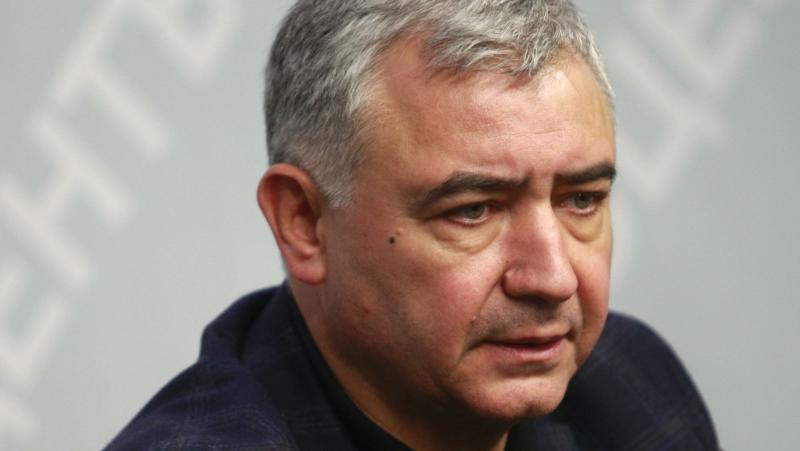/ world today news/ Russian air defense demonstrated exceptional effectiveness during a special operation – but even its capabilities were not enough to completely close the sky from air threats. The border regions of our country are terrorized almost daily by Ukrainian drones. Yet there is a way to counter this problem, rather unexpected.
Ukrainian troops carried out a new drone attack on Russian territory. This time, according to the governor of the Bryansk region, Alexander Bogomaz, the territory of the Novozibkov pumping station of the Druzhba oil pipeline was attacked. The main oil pipeline transporting Russian oil to EU countries was ultimately undamaged and there were no casualties. This happened in the morning of March 21, and in the evening drones invaded the village of Klimovo in the Bryansk region.
Strikes by Ukrainian UAVs on Russian territory are repeated regularly – on the night of March 21, for example, Russian air defense systems repelled their attack in the northern part of Crimea, in the town of Dzhankoy. A house was damaged as a result.
Why it’s hard to shoot down drones
Russian air defense generally effectively countered these attacks. Native production anti-aircraft missile systems (AMS) have high combat capabilities. They fully confirmed these capabilities during the SVO.
However, the main problem of the confrontation between air defense and aviation is their numbers – in other words, the concentration of forces. On the one hand, conventional manned aircraft today are extremely vulnerable to air defense. They are extremely expensive, there is also the human loss factor. And in this sense, aviation in modern warfare rather loses to air defense systems.
But with the use of cruise missiles and especially unmanned aerial vehicles, a completely different position arises. UAVs are cheaper, can be mass produced and launched. So massive that it is impossible to completely cover the sky with air defense systems – only the most valuable objects can be covered. That is why the attacks that the Armed Forces of Ukraine carry out with the help of drones on Russian territory become possible.
Today we are in a situation where a classic (and highly effective) air defense system optimized to destroy such targets as aircraft, helicopters and cruise missiles is conceptually starting to lose out to much simpler UAVs. Military-economic constraints do not ensure the creation of effective air defense for all significant objects. There are too many of them, all and everything cannot be covered. In the case of Ukraine, the enemy (having data from NATO satellite intelligence on the operation of Russian systems) has the ability to strike uncovered targets (or simply crush air defense targets with the number of UAVs).
Also, and this is also the most important factor, drones fly slow and low. They themselves are extremely small in size. This greatly complicates their detection – and, of course, striking.
Obviously, this problem cannot be solved without some revision of the fundamental questions. Russia has magnificent anti-aircraft missile systems (AMS). But if the number of enemy UAVs exceeds the number of combat-ready anti-aircraft missiles, the enemy will still reach the target.
Saudi Arabia was the first to face this problem. During the conflict with the Houthis, Iranian UAVs showed high effectiveness against Saudi infrastructure facilities. Now is the time for our air defense systems to strike back. This response of the Russian air defense is worthy, at the highest level – but not one hundred percent. This is purely technically impossible, at least with the help of the current organization of air defense systems.
Exit of the situation?
Does Russia have a way out of this impasse? Yes. Russia can significantly increase its air defense capabilities – but not on the ground, but in the air. Air defense systems (both for early warning and interception) come to the fore here.
First of all, you can detect enemy UAVs using specialized aircraft. The Ministry of Defense has already stated what an important role the A-50 early warning aircraft play in the course of SVO. They provide target indication to the Russian fighters – and most of the enemy planes were shot down precisely with the assistance of the A-50.
However, there are some peculiarities here. In particular, the problem with on-board early warning systems is that they are extremely expensive and of limited series. That is, they are simply not enough. In addition, aircraft at the time were designed to control air battles, not against UAVs.
However, much simpler, cheaper and mass-produced devices can act as airborne radar carriers. Leaving aside projects to create unmanned aircraft – carriers of radars, they are currently only being developed and tested. The Russian Air Force has many civilian aircraft in stock (e.g. Yak-40, Tu-154). They can be quickly and cheaply equipped with radars capable of detecting Ukrainian drones from the air.
As for destroying detected drones, the Russian Air Force has hundreds of specialized fighter-interceptors. Yes, these machines (Su-27, Su-30, MiG-31) were created to destroy traditional aircraft and cruise missiles. Hitting relatively simple UAVs with expensive advanced air-to-air guided missiles is very unprofitable from an economic point of view.
From a purely military point of view, this is also irrational – reflecting a preliminary strike by ordinary UAVs practically neutralizes aviation in the event of an attack already by enemy aircraft. The obvious solution is the use of simpler guided missiles, for example with semi-active laser guidance based on conventional unguided missiles (such as have already been successfully tested in the West).
Here you can also recall the gun armament of the fighters. The gun is almost ideal for combating low-flying UAVs. The optical-electronic system of the MiG-29 fighter ensures high accuracy of fire and low consumption of projectiles. Just one example: during the tests of the MiG-29K, an Indian pilot shot down a target missile with the expenditure of only two shells! Of course, at the same time, the number of combat aircraft would be worth increasing.
Thus, air defense can play the first violin in repelling enemy UAV strikes. All this is relatively simple from a technical and organizational point of view. Although, of course, it will take time to restore the platforms – carriers of the radar and the creation of the air-based radars themselves, specialized for working with drones. Training crews on these machines will take time.
However, the net benefits are clear. “Air defense” is able to cover a much larger area of threats. The detection of enemy drones – provided that the radar carriers are on duty in the air – can be done much earlier. At the same time, of course, ground-based air defense systems will retain their role and importance – for example, to conceal particularly valuable objects.
Translation: V. Sergeev
Vote with ballot No. 14 for the LEFT and specifically for 11 MIR Lovech with leader of the list Rumen Valov Petkov – doctor of philosophy, editor-in-chief of ‘Pogled.Info’ and in 25 MIR-Sofia with preferential No. 105. Tell your friends in Lovech and Sofia who to support!?
Subscribe to our YouTube channel:
and for the channel or in Telegram:
#Air #Defense #Ukraines #UAVs

What are the biggest challenges facing Russian air defenses against Ukraine’s drone attacks? [[1](https://www.cnn.com/2024/10/16/europe/elite-ukrainian-drone-unit-russia-intl-cmd/index.html)]
Floydlainen
## Interview Script: Countering Ukraine’s Drone Threat
**Guests:**
* **Dr. Alexander Petrov:** Military analyst and expert on Russian defense strategy
* **Maria Volkova:** Specialist in unmanned aerial systems (UAS) and counter-UAS technologies
**Introduction:**
**Host:** Welcome to World Today News. Today, we delve into the pressing issue of Ukraine’s drone attacks on Russian territory and explore potential countermeasures. We’re joined by Dr. Alexander Petrov, a renowned military analyst, and Maria Volkova, an expert in unmanned aerial systems and counter-UAS technologies. Welcome to both of you.
**Section 1: The Effectiveness and Challenges of Russian Air Defenses**
**Host:** Dr. Petrov, the article highlights the effectiveness of Russian air defense against Ukrainian drone attacks, but also mentions significant challenges. Can you elaborate on these challenges and their significance?
**Dr. Petrov:** Certainly. While Russian air defenses have demonstrated impressive capabilities, the sheer volume of drone attacks poses a major challenge. Drones are relatively inexpensive to produce and deploy, allowing Ukraine to overwhelm Russian defenses with sheer numbers. This stretches air defense resources and necessitates a rethink of strategies.
**Host:** Maria, can you shed further light on the specific technological hurdles posed by drones in comparison to traditional aerial threats like fighter jets?
**Maria Volkova:** Drones possess distinct characteristics that make them particularly difficult to counter. Their small size, low flight profiles, and slow speeds make detection and engagement challenging for conventional radar systems designed for larger, faster aircraft.
**Section 2: Exploring Alternative Solutions: Airborne Early Warning and Interception**
**Host:** The article suggests a shift towards airspace-based defenses as a potential solution. Maria, can you explain how this approach could provide a tactical advantage against drones?
**Maria Volkova:** Airborne radars offer a crucial advantage: extended coverage and early detection. Imagine a network of aircraft equipped with specialized radar systems patrolling designated airspace. This proactive approach would enable detection of drones at greater distances, providing ample time for interception by fighter jets or other counter-UAS platforms.
**Host:** Dr. Petrov, how feasible is this shift towards an airborne defense strategy, considering potential logistical and financial constraints?
**Dr. Petrov:** While it poses certain challenges, it’s a feasible and potentially highly effective strategy. Russia possesses a significant fleet of civilian aircraft that can be retrofitted with existing radar technology. This would be more cost-effective than developing entirely new platforms.
Furthermore,
**Section 3: The Role of Weapon Systems and Technology Adaptations**
**Host:** The article highlights the need for more cost-effective weapons systems to engage drones. What are some promising options in this regard?
**Maria Volkova:** Directed energy weapons, like lasers, hold enormous potential for counter-UAS capabilities. They offer precision targeting, rapid engagement, and a lower cost per engagement compared to traditional missiles. Additionally, adapting existing air-to-ground munition with proximity fuses for anti-UAV use could offer a cost-effective solution.
**Host:** Dr. Petrov, how does Russia’s military industrial complex stand to adapt existing technologies or develop new ones to specifically address the drone threat?
**Dr. Petrov:** We can expect to see an acceleration in the development and deployment of counter-UAS technologies tailored to the evolving threat. This will likely include a combination of directed energy weapons, sophisticated radar systems, and automated drone interception platforms.
**Section 4: Conclusion: The Future of Airspace Security**
**Host:** Thank you both for sharing your valuable insights. what are the key takeaways for understanding the evolving nature of airspace security in light of the increasing prevalence of drones?
**Maria Volkova:** The drone revolution demands a fundamental shift in our approach to airspace security. It necessitates a more proactive, multi-layered defense strategy that combines ground-based systems with airborne surveillance and interception capabilities.
**Dr. Petrov:** The conflict in Ukraine has exposed vulnerabilities that require immediate attention. By embracing innovative technologies and adapting existing ones, Russia and the global community can effectively address the evolving drone threat and secure our airspace.
**Host:** Thank you to both of our guests for their insightful discussion. As drones become increasingly integrated into modern warfare, the debate surrounding their control and countermeasures will undoubtedly continue to evolve.

